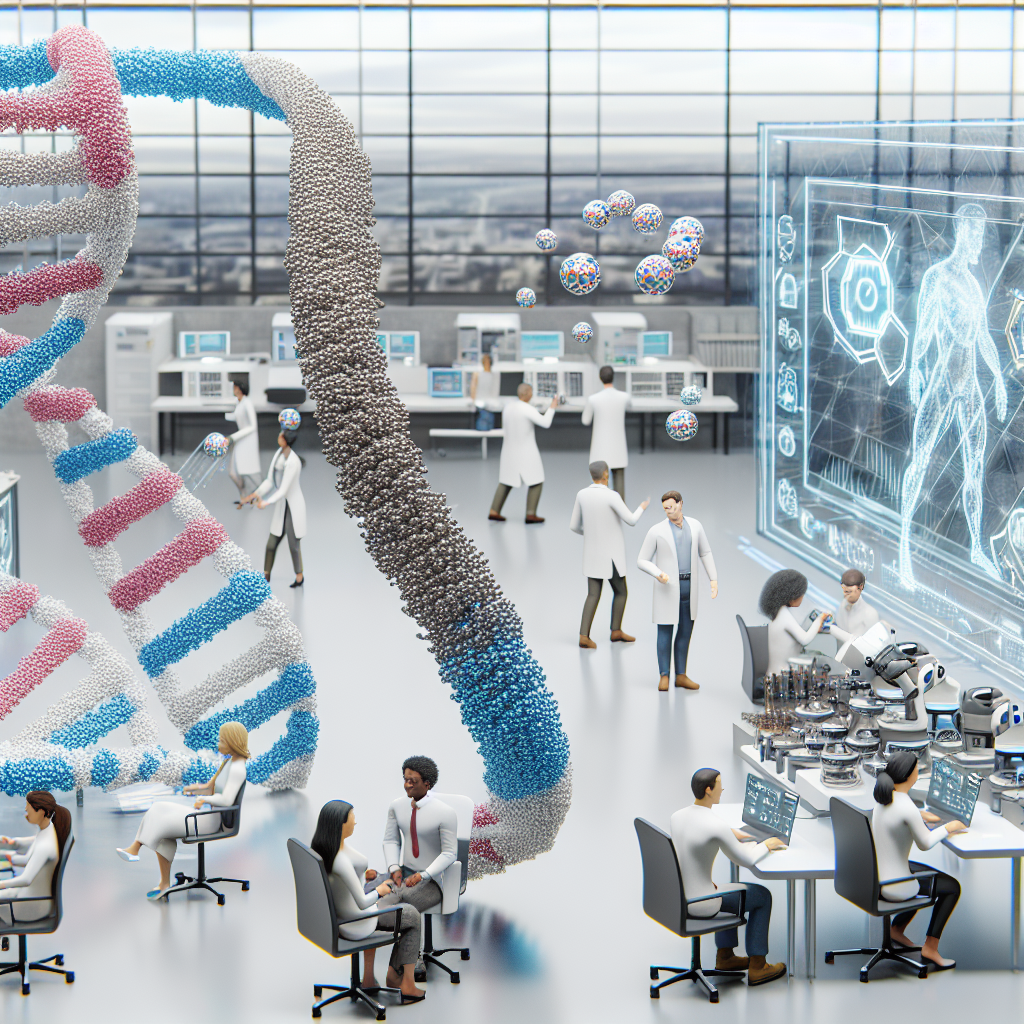-
- AI-Assisted Drug Discovery and Development
- Understanding AI in Drug Discovery
- Configuration Steps for AI-Assisted Drug Discovery
- Step 1: Data Collection
- Step 2: Data Preprocessing
- Step 3: Feature Engineering
- Step 4: Model Selection
- Step 5: Model Training and Validation
- Step 6: Deployment and Monitoring
- Practical Examples of AI in Drug Discovery
- Example 1: Atomwise
- Example 2: BenevolentAI
- Best Practices for AI-Assisted Drug Discovery
- Case Studies and Statistics
- Conclusion
AI-Assisted Drug Discovery and Development

In recent years, the pharmaceutical industry has witnessed a transformative shift with the integration of artificial intelligence (AI) into drug discovery and development processes. The traditional methods of drug development are often time-consuming, costly, and fraught with high failure rates. AI technologies offer innovative solutions to streamline these processes, enhance predictive accuracy, and ultimately bring new therapies to market more efficiently. This guide will explore the configuration steps, practical examples, best practices, and case studies related to AI-assisted drug discovery and development.
Understanding AI in Drug Discovery
AI encompasses a range of technologies, including machine learning, deep learning, and natural language processing, which can analyze vast datasets to identify potential drug candidates, predict their efficacy, and optimize clinical trial designs. The relevance of AI in drug discovery is underscored by its ability to:
- Reduce the time required for drug development.
- Lower the costs associated with research and development.
- Improve the success rates of clinical trials.
- Facilitate personalized medicine approaches.
Configuration Steps for AI-Assisted Drug Discovery
Implementing AI in drug discovery involves several key steps. Below is a structured approach to configure an AI-assisted drug discovery pipeline:
Step 1: Data Collection
Gather relevant biological, chemical, and clinical data from various sources, including:
- Public databases (e.g., PubChem, ChEMBL).
- Clinical trial registries.
- Electronic health records (EHRs).
Step 2: Data Preprocessing
Clean and preprocess the collected data to ensure quality and consistency. This may involve:
- Removing duplicates and irrelevant entries.
- Normalizing data formats.
- Handling missing values through imputation techniques.
Step 3: Feature Engineering
Identify and create relevant features that can enhance model performance. Techniques include:
- Descriptive statistics to summarize data.
- Dimensionality reduction methods (e.g., PCA).
- Encoding categorical variables.
Step 4: Model Selection
Select appropriate machine learning or deep learning models based on the problem type. Common models include:
- Random Forest for classification tasks.
- Convolutional Neural Networks (CNNs) for image data.
- Recurrent Neural Networks (RNNs) for sequence data.
Step 5: Model Training and Validation
Train the selected models using the preprocessed data and validate their performance using techniques such as:
- Cross-validation to assess model robustness.
- Hyperparameter tuning to optimize model settings.
Step 6: Deployment and Monitoring
Deploy the trained model into a production environment and continuously monitor its performance. This includes:
- Setting up automated pipelines for data input.
- Regularly updating the model with new data.
Practical Examples of AI in Drug Discovery
Several companies have successfully implemented AI in their drug discovery processes. For instance:
Example 1: Atomwise
Atomwise uses deep learning algorithms to predict the binding affinity of small molecules to protein targets. Their AI platform has been instrumental in identifying potential drug candidates for diseases such as Ebola and multiple sclerosis.
Example 2: BenevolentAI
BenevolentAI employs machine learning to analyze scientific literature and clinical data, enabling the identification of novel drug targets. Their work has led to the development of new treatments for conditions like amyotrophic lateral sclerosis (ALS).
Best Practices for AI-Assisted Drug Discovery
To maximize the effectiveness of AI in drug discovery, consider the following best practices:
- Ensure data quality and integrity throughout the process.
- Foster collaboration between data scientists and domain experts.
- Adopt an iterative approach to model development and validation.
- Stay updated with the latest advancements in AI technologies.
Case Studies and Statistics
Research indicates that AI can significantly reduce the time and cost of drug development. A study by McKinsey & Company found that AI could potentially reduce the time to market for new drugs by up to 30% and cut development costs by 50%.
Additionally, a case study involving Insilico Medicine demonstrated that their AI platform successfully identified a novel drug candidate for fibrosis in just 46 days, a process that typically takes years.
Conclusion
AI-assisted drug discovery and development represent a paradigm shift in the pharmaceutical industry, offering unprecedented opportunities to enhance efficiency, reduce costs, and improve patient outcomes. By following the outlined configuration steps, leveraging practical examples, and adhering to best practices, organizations can effectively integrate AI into their drug discovery processes. As the field continues to evolve, staying informed about technological advancements and industry trends will be crucial for success in this dynamic landscape.